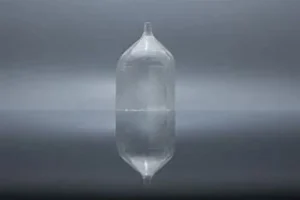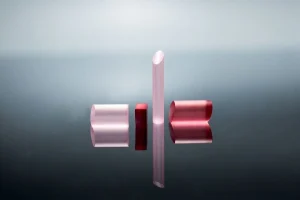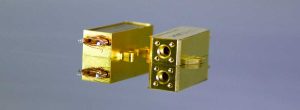Introduction: The Importance of Gain Medium in Laser Systems
In the world of high-energy laser systems, the choice of gain medium is a critical decision that impacts performance, efficiency, and scalability. The two primary options, crystal-based gain media (such as YAG, Yb:YAG) and glass-based gain media (such as Nd:Glass), offer unique advantages and limitations. This comprehensive guide will explore the differences between these two mediums, providing insights into their suitability for various applications.
Crystal-Based Gain Media
Crystal-based gain media, such as YAG and Yb:YAG, are at the forefront of innovation in the field of high-energy laser systems, and their utilization reveals a complex interplay of advantages and limitations. The high thermal conductivity of crystals is a standout feature, enabling efficient cooling mechanisms that minimize thermal effects. This property not only enhances the overall performance of the laser system but also contributes to the system’s stability and reliability, especially in demanding environments.
The broad tuning range offered by crystals is another significant advantage, providing unparalleled flexibility in wavelength selection. This adaptability makes them suitable for a wide array of applications, ranging from medical procedures to industrial manufacturing. The ability to fine-tune the wavelength allows for precise control and optimization of the laser output, catering to specific needs and requirements.
Furthermore, the robust nature of crystals ensures a high damage threshold. This characteristic is vital in intense laser applications where durability and resilience are paramount. Whether in scientific research or military defense, the ability of crystals to withstand high levels of energy without degradation adds to their appeal.
However, these remarkable advantages are counterbalanced by certain challenges and complexities. The precise growth and fabrication techniques required for crystals are intricate and often require specialized equipment and expertise. These factors can drive up costs and extend production timelines, potentially limiting their accessibility for smaller projects or those with budget constraints.

Additionally, despite their high thermal conductivity, crystals can exhibit sensitivity to thermal stress. This sensitivity might lead to potential issues in high-power applications where thermal management is crucial. The balance between maintaining high thermal conductivity and avoiding thermal stress requires careful design and engineering, adding another layer of complexity to the utilization of crystal-based gain media.
In conclusion, while crystal-based gain media offer significant benefits in terms of thermal conductivity, tuning range, and damage threshold, their limitations in terms of fabrication complexity and sensitivity to thermal stress must be carefully considered.
The choice to use crystal-based gain media must be guided by a comprehensive understanding of the specific laser system’s requirements, constraints, and the broader context in which it will be deployed. The ongoing advancements in crystal technology continue to push the boundaries, and future developments may further mitigate existing challenges, unlocking new potentials in the field of high-energy laser systems.
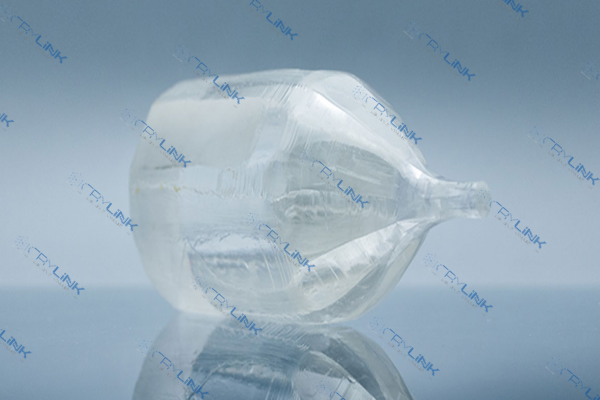
Glass-Based Gain Media
Glass-based gain media, such as Nd:Glass, present an alternative to crystal-based media in the realm of high-energy laser systems, each with its unique set of advantages and limitations. One of the most appealing aspects of glass-based gain media is their ease of fabrication. Unlike crystals, glasses can be manufactured without the need for highly specialized equipment or intricate processes. This ease of production not only reduces costs but also shortens the time required to produce the gain media, making them an attractive option for projects with budget constraints or tight deadlines.
Another significant advantage of glass-based gain media is their high energy storage capability. This property allows them to store substantial amounts of energy, making them particularly suitable for high-energy laser systems where intense energy output is required. Whether in industrial applications or scientific research, the ability to store and release large amounts of energy efficiently is a critical factor in achieving desired outcomes. The high energy storage capability of glasses can be leveraged to enhance performance and enable new possibilities in laser technology.
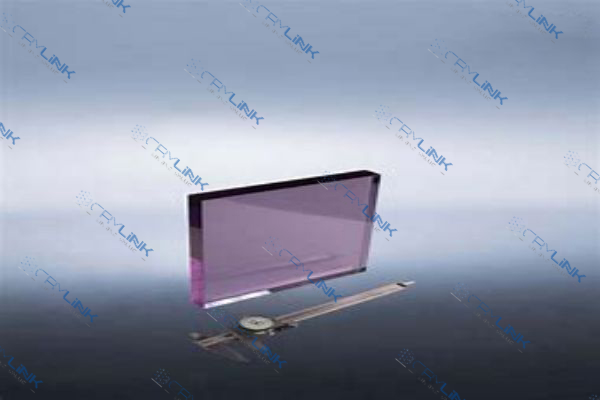
Furthermore, glasses offer versatility in shape and size, enabling customization for specific applications. This adaptability allows designers and engineers to tailor the gain media to the precise requirements of a particular laser system. Whether it’s a specific shape to fit a unique laser cavity or a particular size to match a designated energy output, the versatility of glasses provides a level of flexibility that can be instrumental in optimizing performance.
However, glass-based gain media are not without their challenges. One notable limitation is their lower thermal conductivity compared to crystals. This reduced ability to conduct heat may lead to thermal issues in some applications, particularly in high-power systems where efficient heat dissipation is essential. Careful consideration of cooling mechanisms and system design may be required to mitigate potential thermal challenges.
Additionally, the tuning range of glasses is generally narrower, limiting flexibility in wavelength selection. While crystals offer a broad tuning range that allows for fine-tuning of the wavelength, glasses may not provide the same level of control. This limitation could restrict their suitability for applications that require specific wavelengths or a wide range of tunable outputs.
In summary, glass-based gain media present a compelling option in the field of high-energy laser systems, with distinct advantages in ease of fabrication, high energy storage capability, and versatility in shape and size. However, these benefits are balanced by limitations in thermal conductivity and tuning range. The decision to utilize glass-based gain media must be made with a thorough understanding of these characteristics and a careful assessment of the specific needs and goals of the laser system. The ongoing evolution of glass technology continues to expand the horizons of what is possible, and future innovations may further enhance the appeal of glass-based gain media in the ever-advancing field of laser technology.
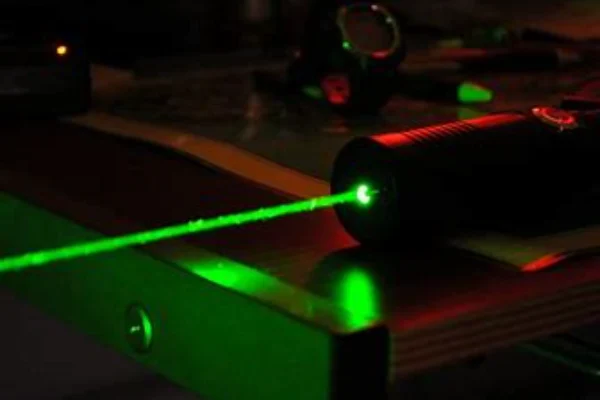
Comparative Analysis: Crystals vs. Glasses
In the intricate world of high-energy laser systems, the comparative analysis between crystal-based and glass-based gain media reveals a complex landscape of considerations that must be navigated to select the optimal gain medium for a specific application. When it comes to suitability for different pulse durations, crystals and glasses present distinct preferences. Crystals, with their high thermal conductivity, are often the go-to choice for short pulse durations.
This property allows them to handle rapid energy transitions efficiently, making them ideal for applications that require quick and precise energy delivery. Glasses, on the other hand, are more suitable for long pulse durations, owing to their high energy storage capability. This ability to store substantial amounts of energy enables glasses to sustain prolonged energy output, making them a fitting choice for applications that require sustained energy delivery over extended periods.
The thermal properties and scalability of crystals and glasses further differentiate them. Crystals are renowned for their superior thermal properties, allowing for efficient heat management and stable performance.
However, these benefits may be offset by challenges in scalability. The complexity of crystal fabrication and the inherent characteristics of the material may limit the ability to scale the production or adapt the crystals to large-scale applications. Glasses, conversely, provide excellent scalability, thanks to their ease of fabrication and adaptability in shape and size.
This scalability makes glasses a versatile option for various applications, from small-scale research projects to large industrial systems. However, this advantage may be tempered by potential struggles with thermal loading. The lower thermal conductivity of glasses compared to crystals may lead to thermal challenges in some scenarios, particularly in high-power systems, necessitating careful design and engineering to mitigate potential issues.
Finally, the considerations of energy transfer efficiency, thermal loading, and nonlinear effects add another layer of complexity to the comparison between crystals and glasses. Both materials have unique energy transfer efficiencies, thermal loading characteristics, and nonlinear effects that must be carefully evaluated in the context of the specific application.
The balance between energy transfer efficiency and thermal loading may require a nuanced understanding of the material properties and system requirements. Nonlinear effects, which can impact the behavior and performance of the laser system, must also be considered, as they can vary significantly between crystals and glasses.
In conclusion, the comparative analysis between crystal-based and glass-based gain media is a multifaceted exploration that requires a comprehensive understanding of the materials’ characteristics and the specific needs of the laser system. The choice between crystals and glasses is not a simple binary decision but a complex evaluation that considers factors such as pulse duration suitability, thermal properties, scalability, energy transfer efficiency, thermal loading, and nonlinear effects.
The ongoing advancements in both crystal and glass technology continue to refine these characteristics, offering new possibilities and challenges in the ever-evolving field of high-energy laser systems. The decision to utilize either crystals or glasses must be guided by careful analysis and a clear vision of the desired outcomes, ensuring that the selected gain medium aligns with the goals and constraints of the specific application.
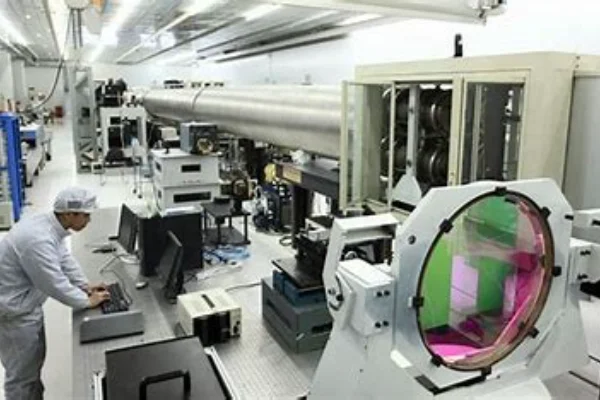
Conclusion: Making the Right Choice
The choice between crystal-based and glass-based gain media for high-energy laser systems is complex and multifaceted. By understanding the advantages and limitations of each type, as well as their suitability for different pulse durations, thermal properties, and scalability, one can make an informed decision that aligns with the specific requirements of the laser system.
FAQs
- What are the main differences between crystal-based and glass-based gain media?
- Crystal-based gain media offer high thermal conductivity and broad tuning range but are complex to fabricate. Glass-based gain media are easier to manufacture and store more energy but have lower thermal conductivity.
- Which gain medium is suitable for short pulse durations?
- Crystals are generally preferred for short pulse durations due to their high thermal conductivity.
- Can glass-based gain media be customized for specific applications?
- Yes, glasses offer versatility in shape and size, enabling customization for specific applications.
- What are the thermal challenges associated with crystals and glasses?
- Crystals may be sensitive to thermal stress, while glasses may face thermal loading issues due to their lower thermal conductivity.
- How do I choose between crystals and glasses for my high-energy laser system?
- Consider factors such as pulse duration, thermal properties, scalability, energy transfer efficiency, and nonlinear effects to make an informed decision.


